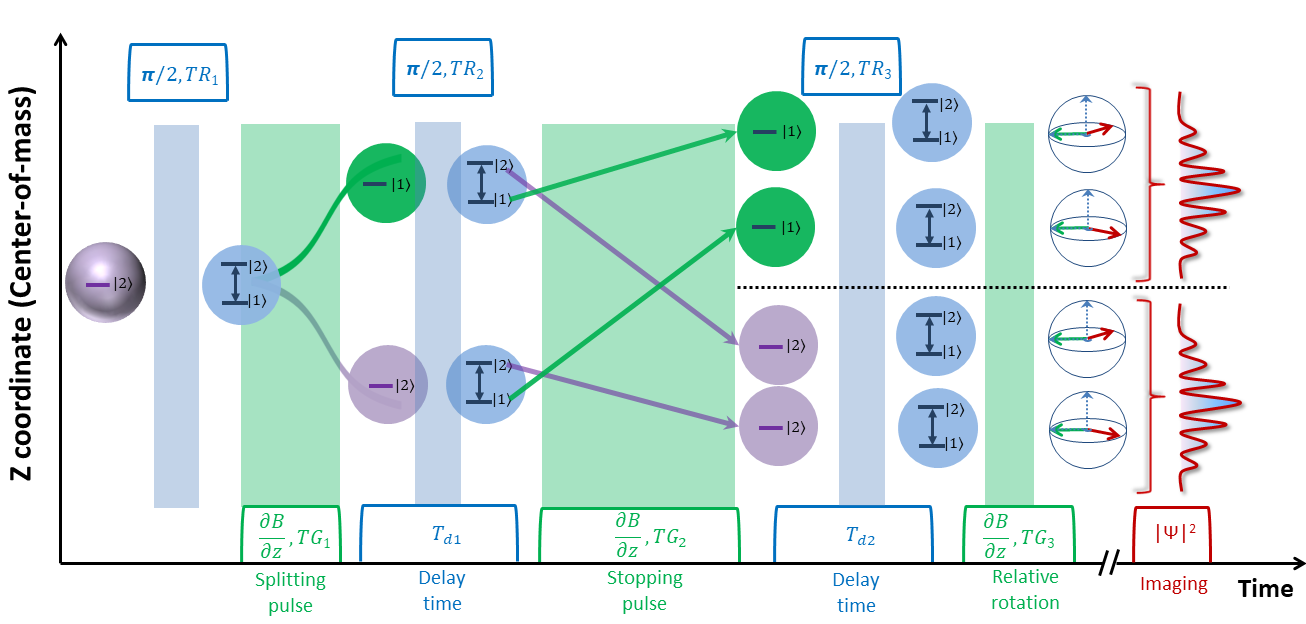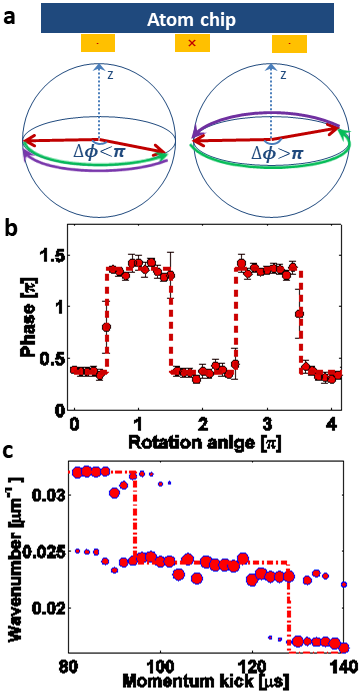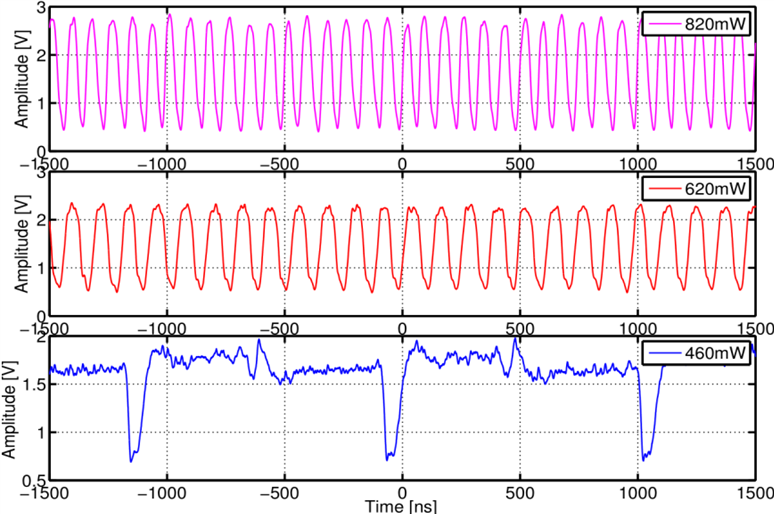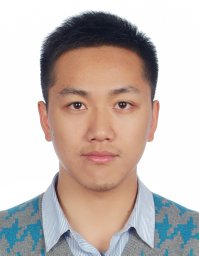Zhifan Zhou
I am a postdoc with Dr. Paul Lett in Joint Quantum Institute at University of Maryland at College Park. Previously, I was a postdoc in the Atom Chip Lab with Dr. Ron Folman at Ben-Gurion University of the Negev. I got my Ph.D degree in Department of Physics at East China Normal University with Dr. Jietai Jing, and with Dr. Paul Lett via the exchange program at Joint Quantum Institute at University of Maryland at College Park and Laser Cooling and Trapping Group at National Institute of Standards and Technology.
I am interested in various topics related to quantum science and atomic, molecular, and optical physics, including quantum sensing, quantum information processing, ultracold atoms, and precision measurement.
News
- [2023/11] Nonlocal phase modulation of multimode, continuous-variable twin beams accepted by Optica Quantum.
- [2023/10] Properties of two-mode quadrature squeezing from four-wave mixing in rubidium Vapor appears on arXiv.
- [2023/01] Internal clock interferometry paper appears on arXiv.
- [2023/01] Invited talk about Nonlocal phase modulation of multi-frequency-mode twin beams: toward networked quantum computing and sensing at SPIE Photonics West.
- [2022/10] Oral presentation about Nonlocal phase modulation of continuous-variable twin beams at FiO+LS.
- [2022/06] Poster presentation about Geometric phase and topology in a field gradient matter-wave interferometer at DAMOP.
- [2022/05] Oral presentation about Dissipative Kerr solitons in a warm atomic vapor system at CLEO.
- [2021/05] Realization of a complete Stern-Gerlach interferometer: Toward a test of quantum gravity is published at Science Advances. The spatial dynamical decoupling technique is used to increase the coherence length.
- [2021/05] Poster presentation about A self-oscillating phase-conjugate resonator as an optical frequency comb at CLEO.
- [2020/06] Oral presentation about Freezing of spinor dynamics in an ultracold Bose gas via microwave dressing at DAMOP 2020.
- [2020/01] Invited talk about An experimental test of the geodesic rule proposition for the noncyclic geometric phase at PQE. The observed geometric phase due to the coupling of the internal and external degrees of freedom and the geodesic rule is later published at Science Advances.
Research
Light-matter interaction has attracted intense research interest ranging from quantum sensing to quantum information science (such as quantum computing and quantum networks). I focus on the dynamical control of light-matter interaction to achieve robust generation and manipulation of multi-mode quantum entanglement, with both atomic and optical qumodes. I researched for more compact and direct means of generating multi-mode entanglement in spatial and frequency domains that will make multi-mode entanglement more scalable and stable, resulting in more complex protocols. Meanwhile, the miniaturization of entanglement generation and manipulation is an essential step toward practical applications. I investigated light-matter interaction in an integrated system (an atom chip) that offers additional controls to generate novel types of entanglement and high-precision probes in different scenarios. My long-term goal is to explore multi-mode entanglement from light-matter interaction to advance quantum science and technology with integrated systems.
Developed an atom-chip technique with dynamical control of atomic qumodes
 A significant challenge of using atom chips for quantum science and technology is the lack of dynamic control. For example, traditional atom interferometers on chip used two static traps containing single-state atoms. I developed a series of atom chip techniques to distribute atoms within an initial single wave-packet with a single atomic state into multiple wavepackets with two internal atomic levels (qubits) [Science15, CQG18, SciAdv21, PRL19], which enable dynamic control over various internal and external degrees of freedom. More specifically, I realized a self-interfering clock (compromising two atomic spin states, acting as an atomic qubit) as a which-path witness [Science15, CQG18], which is the first time an atom clock has been put on a spatial superposition. I used the entanglement between the spin and momentum states for a spatial dynamical decoupling technique that increases the coherence length, realizing a long-sought complete Stern-Gerlach interferometer, which is important for studying quantum gravity [SciAdv21]. I achieved a T${^3}$-Stern-Gerlach matter-wave interferometer, whose phase scales with the cube of the time that the atom spends in the interferometer [PRL2019], instead of the square of time in traditional atom interferometers. These techniques allow a high-precision tool for the quantum manipulation of atomic qubits and for the surface probe.
A significant challenge of using atom chips for quantum science and technology is the lack of dynamic control. For example, traditional atom interferometers on chip used two static traps containing single-state atoms. I developed a series of atom chip techniques to distribute atoms within an initial single wave-packet with a single atomic state into multiple wavepackets with two internal atomic levels (qubits) [Science15, CQG18, SciAdv21, PRL19], which enable dynamic control over various internal and external degrees of freedom. More specifically, I realized a self-interfering clock (compromising two atomic spin states, acting as an atomic qubit) as a which-path witness [Science15, CQG18], which is the first time an atom clock has been put on a spatial superposition. I used the entanglement between the spin and momentum states for a spatial dynamical decoupling technique that increases the coherence length, realizing a long-sought complete Stern-Gerlach interferometer, which is important for studying quantum gravity [SciAdv21]. I achieved a T${^3}$-Stern-Gerlach matter-wave interferometer, whose phase scales with the cube of the time that the atom spends in the interferometer [PRL2019], instead of the square of time in traditional atom interferometers. These techniques allow a high-precision tool for the quantum manipulation of atomic qubits and for the surface probe.
Investigated the intersection between entanglement and topology with atomic qumodes
 Combing entanglement and topology enables novel quantum states with topological protection that is immune from disturbances. I investigated such a combination by creating topological structures with the entangled multiple modes [SciAdv20]. Specifically, I entangled the internal (spin) and external (spatial) degrees of freedom with atomic qubits and applied the geodesic rule to search for geometric phase and topological effects [SciAdv20]. I reported a previously unshown experimental confirmation of the geodesic rule for a noncyclic geometric phase and demonstrated, with high precision, the predicted phase sign change and $\pi$ jumps. I furthermore studied the entanglement and geometric phase-induced momentum quantization in an atomic interferometer [NJP22]. The geodesic rule and the sharp phase/momentum jumps can be applied to obtain the weak signals in internal population distributions and external field potentials. The noncyclic operations can be done faster than cyclic operations and facilitate additional control over relevant applications involving geometric phase and topology, such as geometric quantum computing.
Combing entanglement and topology enables novel quantum states with topological protection that is immune from disturbances. I investigated such a combination by creating topological structures with the entangled multiple modes [SciAdv20]. Specifically, I entangled the internal (spin) and external (spatial) degrees of freedom with atomic qubits and applied the geodesic rule to search for geometric phase and topological effects [SciAdv20]. I reported a previously unshown experimental confirmation of the geodesic rule for a noncyclic geometric phase and demonstrated, with high precision, the predicted phase sign change and $\pi$ jumps. I furthermore studied the entanglement and geometric phase-induced momentum quantization in an atomic interferometer [NJP22]. The geodesic rule and the sharp phase/momentum jumps can be applied to obtain the weak signals in internal population distributions and external field potentials. The noncyclic operations can be done faster than cyclic operations and facilitate additional control over relevant applications involving geometric phase and topology, such as geometric quantum computing.
Explored multi-mode entanglement generation and manipulation of optical qumodes:
 Multi-mode nonclassical states of light are an essential resource in quantum information science. I explored the multi-mode nature of quantum entanglement in spatial and frequency domains with a four-wave mixing (FWM) process in hot rubidium vapor [OL11, APL11, OL12,OL11, OE12a, OE12b, CLEO21, CLEO22a, CLEO22b]. Utilizing the strong light-atom interaction in free space, I realized frequency-controllable entangled beams [OL11, OL12] and used entangled beams to construct a quantum interferometer [APL11]. In the spatial domain, I used spatial light modulators [OE12a] to image multi-spatial modes with quantum noises and realized a temporally multiplexed storage of images in a gradient echo memory [OE12b]. In the frequency domain, I used electo-opto modulators (EOMs) and phase modulations to build the correlation among different frequency-binned modes, which provides a compact and direct way to generate a high-dimensional quantum network [CLEO22b]. Using a phase-conjugate resonator, I demonstrated an optical frequency comb [CLEO21] and observed dissipative Kerr solitons [CLEO22a]. FWM in atomic vapor is a powerful platform for studying multi-mode optical entanglement and its applications.
Multi-mode nonclassical states of light are an essential resource in quantum information science. I explored the multi-mode nature of quantum entanglement in spatial and frequency domains with a four-wave mixing (FWM) process in hot rubidium vapor [OL11, APL11, OL12,OL11, OE12a, OE12b, CLEO21, CLEO22a, CLEO22b]. Utilizing the strong light-atom interaction in free space, I realized frequency-controllable entangled beams [OL11, OL12] and used entangled beams to construct a quantum interferometer [APL11]. In the spatial domain, I used spatial light modulators [OE12a] to image multi-spatial modes with quantum noises and realized a temporally multiplexed storage of images in a gradient echo memory [OE12b]. In the frequency domain, I used electo-opto modulators (EOMs) and phase modulations to build the correlation among different frequency-binned modes, which provides a compact and direct way to generate a high-dimensional quantum network [CLEO22b]. Using a phase-conjugate resonator, I demonstrated an optical frequency comb [CLEO21] and observed dissipative Kerr solitons [CLEO22a]. FWM in atomic vapor is a powerful platform for studying multi-mode optical entanglement and its applications.
Dissipative Kerr solitons in a warm atomic vapor system
 Light-atom interactions in gaseous atoms exhibit strong and tunable nonlinearity and dispersion, enabling exotic physics to be realized. Dissipative Kerr solitons (DKSs) are self-localized photonic structures resulting from the double balance of dispersion by nonlinearity and loss by parametric gain, which are typically realized in solid-state systems. In the figure on the left [CLEO22a], I present DKSs based on a four-wave mixing process in hot rubidium atoms. The solitons are tunable with pump detuning and laser power and exhibit Turing rolls, platicons, and dark-soliton formation. The realization of DKSs in the atomic systems will facilitate the fundamental study of nonlinear optics such as the direct observation of the dynamics in the temporal domain and the precise control such as soliton collisions. As quantum light sources are readily available with a four-wave mixing process in hot rubidium atoms, it is interesting to explore the quantum properties of DKSs and the relationship with the quantum dynamics of photons.
Light-atom interactions in gaseous atoms exhibit strong and tunable nonlinearity and dispersion, enabling exotic physics to be realized. Dissipative Kerr solitons (DKSs) are self-localized photonic structures resulting from the double balance of dispersion by nonlinearity and loss by parametric gain, which are typically realized in solid-state systems. In the figure on the left [CLEO22a], I present DKSs based on a four-wave mixing process in hot rubidium atoms. The solitons are tunable with pump detuning and laser power and exhibit Turing rolls, platicons, and dark-soliton formation. The realization of DKSs in the atomic systems will facilitate the fundamental study of nonlinear optics such as the direct observation of the dynamics in the temporal domain and the precise control such as soliton collisions. As quantum light sources are readily available with a four-wave mixing process in hot rubidium atoms, it is interesting to explore the quantum properties of DKSs and the relationship with the quantum dynamics of photons.
